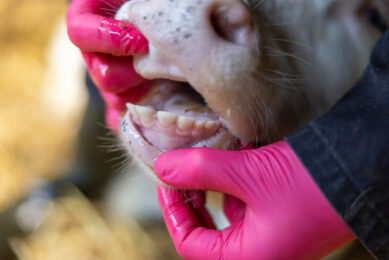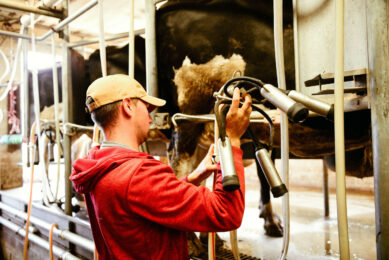Which US states will see avian influenza emerge and which are at greater risk?

To answer some important questions surrounding H5N1, scientists looked at the current avian influenza situation in dairy cows in the US in a recent study. Which states will be impacted in the future and are at higher risk? Is under-reporting of avian influenza in dairy cows an important factor, and what about the sufficiency of current interventions? In this research the scientists also present a simulation model to test transmission and predict the scale of the disease.
Model used
A stochastic metapopulation transmission model was developed to predict the scale, the most important epidemiological data, and the US states at greatest risk in the current H5N1 avian influenza epidemic in US dairy cattle.
The model simulated H5N1 transmission, capturing 9,308,707 milk cows in 35,974 herds across the 48 US states, with cattle movement informed by probabilistic outputs from the US Animal Movement Model (USAMM) and verified using Interstate Certificates of Veterinary Inspection data.
Mechanistic modeling assumptions made relate to the probability of detecting and reporting an infected herd proportional to the number of infected cattle and total population size of the herd, irrespective of the US state they reside in. The model successfully simulates outbreaks for US states that have frequently reported outbreaks, such as California.
Alarmingly, only 16 of the 26 states where the model predicted a majority of simulations would result in an H5N1 outbreak by 2 December 2024 had actually reported one, suggesting a high degree of under-reporting.
The scientists estimated the rates of under-reporting by state, by comparing the number of confirmed outbreaks with model simulated trajectories and present the anticipated rates of positivity for cattle tested upon leaving each state over time. They further used this model to view the impact of intervention methods to date.
Study findings: under-reporting, at-risk states
Their findings predict that the West Coast states have the highest disease burden, with Arizona and Wisconsin at the highest risk of future outbreaks. In addition, Indiana and Florida are also at significant risk of H5N1 outbreaks.
The study highlights gaps in current biosecurity surveillance systems and suggests that with dairy outbreaks foreseen for 2025, urgent interventions addressing these gaps will be needed.
The Susceptible-Exposed-Infected-Recovered (SEIR) model successfully simulated outbreaks for states with frequent reporting like California, though it overestimated reported outbreaks in some other states (Texas, Ohio, and New Mexico), which the researchers interpret as potential under-reporting in those states relative to California’s baseline.
Control measures insufficient
Investigations of current mitigation measures reveal that they are insufficient to control, much less reverse, the prevalence of H5N1 in the country. The only current mitigation measure enforced across states is testing exported cattle (screening up to 30 cows/herd for H5N1). Model predictions revealed that increasing this screening to even 100 cows/herd would result in only a slight reduction in mean outbreaks and would not fundamentally alter the epidemic’s trajectory, they said.
They highlighted that the SEIR infection model does not account for other zoonotic viral reservoirs in model predictions. The ongoing avian influenza epidemic and the possibility of these birds infecting cattle may exacerbate model predictions.
They highlight that more urgent, farm-focused, biosecurity interventions and targeted surveillance schemes are needed as outbreaks will continue in 2025. In reality, differences in public health resourcing and messaging will impact outbreak detection rates.
Conclusion
They forecast that states in the mid-West and Florida are the most probable next states to declare their first outbreak. This trend is due to the epidemic beginning in Texas, which exports primarily to nearby West Coast states.
They further suggest that current reports on the prevalence of H5N1 dairy cattle infections are an underrepresentation of the true concentration of the disease within the United States. Current anti-H5N1 transmission interventions are insufficient to prevent additional outbreaks throughout 2025. Future outbreaks will be seen in Arizona and Wisconsin, with Florida and Indiana requiring additional surveillance efforts.









